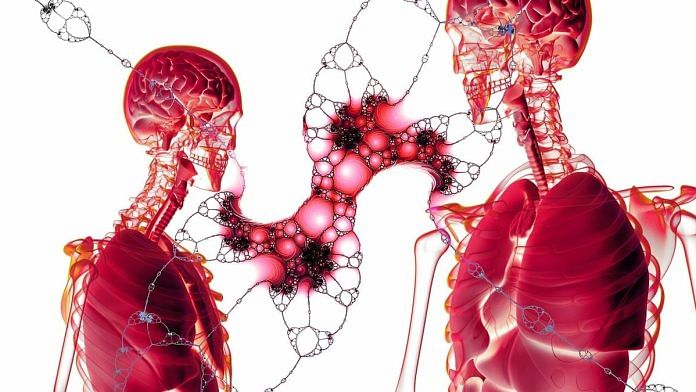New Delhi: Is there a link between specific organ diseases and faster ageing? Recent studies on animals like mice suggested variations in ageing among individuals and organs, prompting a team of researchers to investigate whether this phenomenon extends to humans.
As a result, a peer-reviewed study published in Nature Journal on 6 December has now introduced a method for studying organ ageing, offering insights into disease prediction and ageing effects.
Analysing blood plasma proteins linked to specific organs in 5,676 adults across various age groups, researchers relied on machine learning models to underline significant differences in ageing among 11 major organs including the heart, kidney, liver, and lungs.
Astonishingly, almost 20 percent of participants exhibited accelerated ageing in one organ, while 1.7 percent were classified as multi-organ agers. This accelerated ageing correlated with a 20-50 percent higher mortality risk, linking specific organ diseases to faster ageing.
Notably, accelerated heart ageing increased heart failure risk by 250 percent, while accelerated brain and vascular ageing independently predicted progression of Alzheimer’s, rivalling the effectiveness of current biomarkers. Read more here.
Also Read: ‘Eat right, live longer’ — Nature study says diet could boost life expectancy by 10 years
Electric eels can induce gene transfer
The electric eel, capable of releasing up to 860 volts of current, is a surprise ally of genetic modification, according to a peer-reviewed study by researchers from Nagoya University in Japan.
Published in PeerJ on 4 December, the study demonstrates that electric eels can provide enough electricity to induce gene transfer in small fish larvae, challenging the perception that electroporation is solely a laboratory process.
Electroporation is the process by which electricity is used to make pores in the cell membrane that help in the transfer of genetic material.
Researchers exposed zebrafish larvae to a DNA solution, introduced an electric eel, and observed a 5 percent transfer of genes. The study suggests that organisms generating electricity, like electric eels, could influence genetic modification in nature, opening new avenues for understanding biological phenomena. Read more here.
Biomedical applications of sea cucumbers
A team of marine scientists and chemists from the University of the Philippines conducted a new study on the biomedical potential of the sea cucumber species Stichopus cf. horrens, commonly found off the Philippine coast.
Published in PLOS ONE journal on 6 December, the peer-reviewed study revealed the presence of abundant bioactive compounds in the species, including phosphatidylcholines and phosphatidylethanolamines.
These compounds, found in various foods like soybeans and eggs, have potential anti-inflammatory properties, offering relief for conditions like ulcerative colitis. Also, terpenoid glycosides and saponins with reported anti-cancer benefits were present in the body wall.
This study sheds light on the untapped biomedical applications of sea cucumbers, emphasising the need for further research into their compounds and processing methods. Read more here.
Potential breakthrough in asthma treatment
A new peer-reviewed study published in The Lancet shows that severe asthma can be effectively managed with biologic therapy i.e. medicines targeting the immune system instead of high-dose inhaled steroids.
The drug tested is known as benralizumab (SHAMAL). The multinational study, published on 7 December, was led by scientists from King’s College London and showed that 92 percent of patients on benralizumab could safely reduce inhaled steroid dosage, and over 60 percent could do without it.
This marks a huge advancement for severe asthma patients, potentially mitigating adverse effects of inhaled steroids, such as osteoporosis, diabetes, and cataracts.
Benralizumab, reducing inflammatory eosinophil cells, is administered every four to eight weeks. Read more here.
(Edited by Amrtansh Arora)
Also Read: What’s common to sharks & humans? We both know what’s bitter, show taste receptor findings in fish



